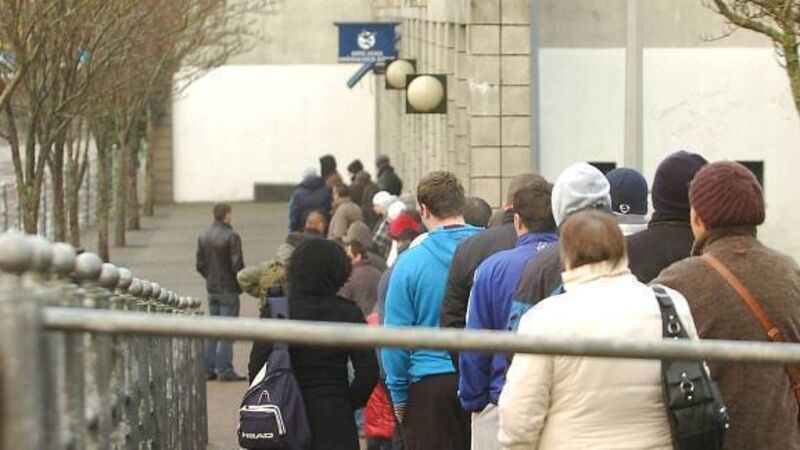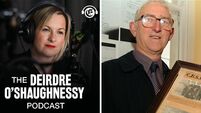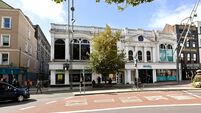SPECIAL REPORT DAY 2: Is austerity working - the economic impact

Nowhere more so than Ireland.
From the time the national coffers started looking very shaky in 2008, the first of the hairshirt budgets introduced that year heralded an era of unprecedented belt tightening.
There was a 14% contraction in GDP between the last quarter of 2007 and the last quarter of 2009.
In 2007, general government debt was running at 25% of GDP and the country was posting a small budget surplus. The budget deficit ballooned to 32% of GDP by 2010 as the State had to shoulder the burden of recapitalising the banks. The national debt is forecast to peak at 123% of GDP this year and that’s if the growth forecasts prove accurate.
If growth undershoots, then the IMF predicts that the debt mountain will peak at 130% of GDP by 2016.
In view of these sobering figures, was there any alternative to austerity? This literally is the €64bn question. Austerity on its own is never a good idea as it sucks the lifeblood out of an economy. But the context of Ireland’s economic collapse is much different to the garden variety downturn.
If there is a character from Greek mythology that best describes the Irish crisis it would be Hydra — the poisonous serpent with nine heads. Every time one head was injured, another head grew in its place.
There were many causes of the economic collapse. And every time the Government managed to put out one fire another blaze flared up with raging intensity.
The former White House chief of staff, Rahm Emanuel, famously said at the start of President Barack Obama’s first term that it is never a good idea “to waste a good crisis”. In this vein, it would be wrong to look at the austerity debate from the narrow perspective of whether the Government should ease up on spending cuts in October’s budget.
Understanding why the country has been put through this chastening level of hardship over the past few years is crucial if Ireland is to have a system of governance fit for purpose in the future.
When Brian Cowen was taoiseach he blamed the economic collapse on the subprime crisis and the failure of the investment bank Lehman Brothers, which wreaked havoc across the global financial system.
This pithy and rather self-serving explanation does have a ring of truth. But it is far from the whole story. By 2007, the economy was like a giant hedge fund — a massively over-leveraged play on an overheated property market.
Speaking in 2007 at the launch of a charity for families bereaved through suicide, the former taoiseach Bertie Ahern couldn’t understand why anybody who questioned the sustainability of this model didn’t go and commit suicide. The good times were here to stay and dissent would not be tolerated.
The former Finnish central bank governor, Peter Nyberg, in a report published in 2011, cited groupthink as an important factor in the economic crash.
The release of the Anglo tapes over the past few weeks has unleashed a fresh torrent of public anger towards the bankers. So far, Irish Nationwide, Anglo Irish Bank, AIB, Bank of Ireland, Permanent TSB, and EBS have cost the State €64bn of taxpayers’ money and robbed the country of its economic sovereignty in Nov 2010.
But an over-stretched banking system was symptomatic of a much deeper economic malaise that exposed huge political, regulatory, and governance failures.
The current age of austerity has its roots in Ireland’s membership of the euro. As it is now obvious, the original architecture for a European Monetary Union was hopelessly flawed. It is impossible to have a currency union without some sort of fiscal and political union as well.
However, there was no appetite among EU leaders to agree to the vast pooling of sovereignty needed for a functioning EMU back in the late 1990s.
The thinking among Brussels mandarins was that the changes needed for the survival of the euro would be brought in through incremental changes in the decade following its launch as EU leaders realised the shortcomings of existing legislation.
The complete opposite happened. In the late 1990s, the former US Federal Reserve chairman, Alan Greenspan, reduced interest rates to historically low levels initially on fears of the Y2K bug and then to offset the effects of the bursting of the dotcom bubble.
The new era of globalisation in financial markets prompted an unprecedented flow of cheap credit through most economies. Ireland, as a small, open economy, benefited more than most. Bond yields between core and periphery eurozone countries converged.
Faced with a rapidly overheating economy, the government needed to apply the brakes. But control of interest rates was the responsibility of the ECB, which was much more worried about Germany’s ailing economy. Consequently, monetary policy was far too loose for Ireland.
The Irish growth model of the 1990s — based on attracting foreign direct investment — gave way to a property boom. Everybody became a speculator.
The government did nothing to stop the party. From 2002 onwards, tax breaks for property developers were introduced. There were giveaway budgets as public spending soared. The size of the public sector ballooned.
The tax base was narrowed as income tax rates were reduced and low-income earners were taken out of the tax net altogether. When Charlie McCreevy, the former finance minister, tried to dampen expectations in 2004, he was suddenly appointed Ireland’s new EU commissioner.
Mr McCreevy was replaced in the Department of Finance by Brian Cowen. The good times rolled on. Bank of Scotland Ireland was the first financial institution to introduce 100% mortgages. The other banks quickly followed. House prices soared.
The Central Bank failed to spot the warning signs that would lead to one of the worst banking catastrophes in economic history.
Quangos were emerging on a daily basis for no apparent reason. Social partnership, which was originally set up to maintain industrial peace, had become a cash machine for public sector employees by the Noughties.
The obvious questions that remain unanswered is why was there no attempt to rein in the level of credit in the economy.
One thing is for sure: The system of governance at all levels was rotten. These failures have never been properly explained.
The cynical interpretation is that the then taoiseach, Bertie Ahern, was only interested in one thing — clinging on to power at all costs. As a result everybody was bought off. And even though the Central Bank is supposed to be independent, there has always been suspicions that political interference helped neuter it.
Surely an inquiry with a much wider scope than the proposed banking inquiry is needed to get to the bottom of the crisis.
The taxpayer is now left picking up the pieces. The latest Central Bank figures show there are 95,554 residential mortgages in arrears over 90 days, with a combined value of €18.1bn.
Central Bank director Fiona Muldoon warned in a speech in April that there is potentially €25bn in impaired SME loans sitting on the balance sheets of the banks.
Nama was set up in 2009 to take over roughly €74bn in what are mostly troubled property loans.
The public finances are in similar rag order. Government debt was €50bn at the end of 2008. At the end of 2012, the national debt stood at €137.6bn and general government debt, which includes cash balances and other debt instruments, was €192.46bn at the end of last year.
The government went from posting a budget surplus in 2007 to recording a fiscal deficit of 14.2% in 2009, which ballooned to 32% of GDP by 2010 when the costs of the bank bailout were included.
Between 2011 and 2014, the Government has to make €15bn in budgetary cuts in an effort to bring the budget deficit within the 3% of GDP target by 2015 agreed with the troika.
The backdrop to Ireland’s fiscal consolidation programme could not be less favourable. The eurozone has been mired in a deep depression over the past few years. The US and the UK economies are finally showing some signs of life following four years of stagnation.
The domestic economy remains floored as people pay down personal debt, which peaked at €203.8bn in 2008. That has since dropped to €176.9bn, which represents €38,570 for every person in the country.
AIB and Permanent TSB are State-owned and still loss-making. Bank of Ireland is 15% State-owned, although unless it redeems €1.8bn in preference shares by next March, then it will fall further into State ownership.
As long as the banks continue to deleverage and work through mortgages arrears, they will be severely hampered in how much they can lend.
There are a number of false assumptions about Ireland’s fiscal woes that have crept into the popular narrative. Chief among these is the idea that the weight of bank debt was solely responsible for the economic collapse and ensuing austerity. This is untrue. Ireland had a massive structural deficit coming into the crisis.
By 2007, the government had become heavily reliant on transient property related taxes to cover surging current and capital expenditure.
When the property market crashed, revenue from stamp duty and the rest of the construction sector dried up.
If an EU banking union had been in place in 2008 and Ireland could have hived off its bank debts into the ESM, it still would have been faced with massive belt tightening.
But how much longer can austerity continue? There is a fine balancing act between gaining the confidence of the markets by showing that the national coffers are under control and easing up on austerity in an effort to encourage domestic consumption and stoke growth.
This is likely to create huge tensions between the Government and the troika and between the coalition parties in the lead-up to October’s budget. If whatever strategy is chosen backfires, then it has the potential to unravel a huge amount of painfully won progress since Brian Lenihan’s first emergency budget in Oct 2008.













